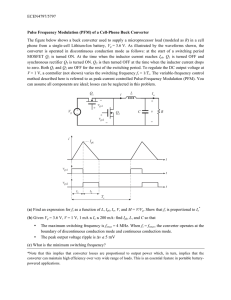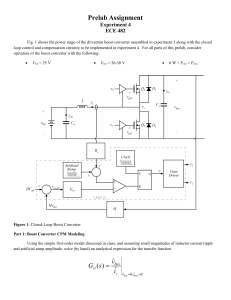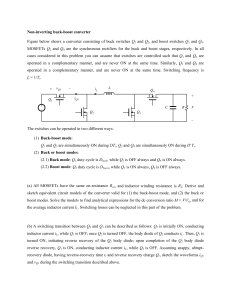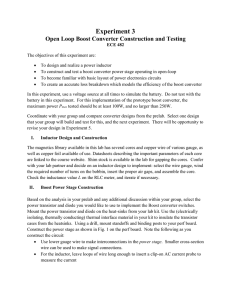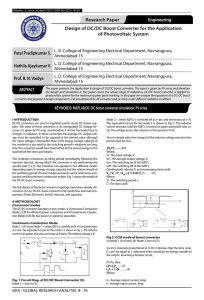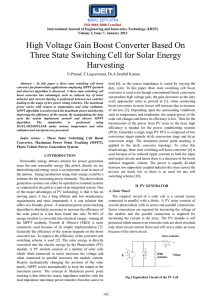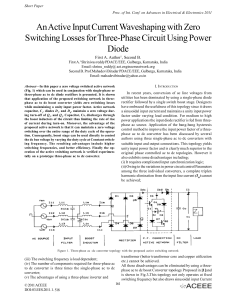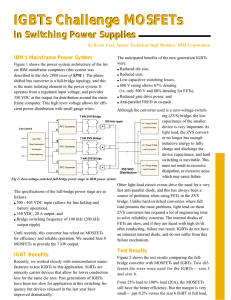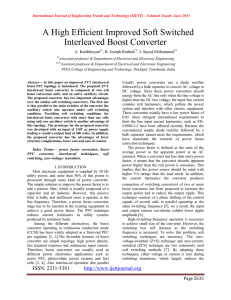Prelab Assignment Experiment 3 ECE 482
advertisement
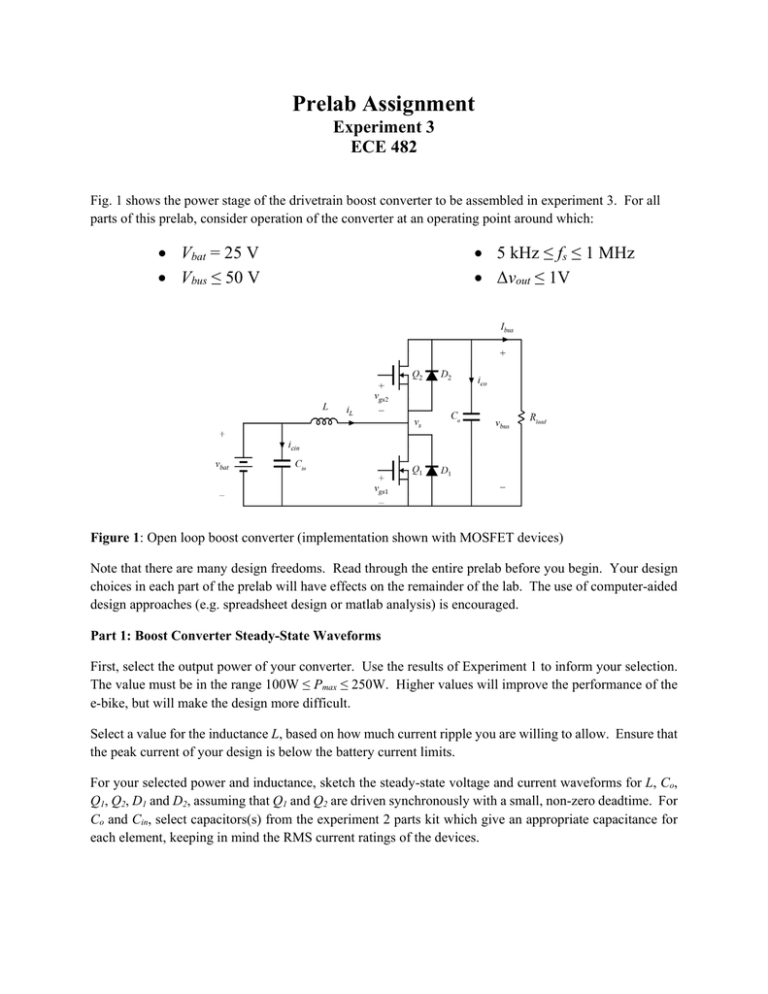
Prelab Assignment Experiment 3 ECE 482 Fig. 1 shows the power stage of the drivetrain boost converter to be assembled in experiment 3. For all parts of this prelab, consider operation of the converter at an operating point around which: Vbat = 25 V Vbus ≤ 50 V 5 kHz ≤ fs ≤ 1 MHz Δvout ≤ 1V Figure 1: Open loop boost converter (implementation shown with MOSFET devices) Note that there are many design freedoms. Read through the entire prelab before you begin. Your design choices in each part of the prelab will have effects on the remainder of the lab. The use of computer-aided design approaches (e.g. spreadsheet design or matlab analysis) is encouraged. Part 1: Boost Converter Steady-State Waveforms First, select the output power of your converter. Use the results of Experiment 1 to inform your selection. The value must be in the range 100W ≤ Pmax ≤ 250W. Higher values will improve the performance of the e-bike, but will make the design more difficult. Select a value for the inductance L, based on how much current ripple you are willing to allow. Ensure that the peak current of your design is below the battery current limits. For your selected power and inductance, sketch the steady-state voltage and current waveforms for L, Co, Q1, Q2, D1 and D2, assuming that Q1 and Q2 are driven synchronously with a small, non-zero deadtime. For Co and Cin, select capacitors(s) from the experiment 2 parts kit which give an appropriate capacitance for each element, keeping in mind the RMS current ratings of the devices. Part 2: Switching Device Implementation In the experiment 2 parts kit, you have the option to select from multiple power MOSFETs and IGBTs (each labeled as quantity: X). Select which devices you will use to implement the boost converter, and explain why you chose the devices that you did. Some factors which you may want to consider include conduction and switching losses of the device in-circuit, voltage and current capabilities of the device, switching speed, availability of app notes and device models, etc. Note that switching losses scale with switching frequency, so your decisions for both are interrelated. For experiment 3, the MOSFETs will be driven with an LM5106 gate driver. Assume 10 Ω of turn-on resistance and 2 Ω turn-off, unless you are confident that alternate values will improve performance. Specify: which devices are selected, and explain why this choice is better than alternatives. Part 3: Boost Converter Inductor Design The magnetics library available for use in this lab, detailed on the course website, contains several ferrite core geometries and two different core materials. A variety of solid-core wires are available. Datasheets describing the important parameters of core shapes, sizes, and materials are linked from the course website. Design the best inductor you can for the application described in the above paragraphs; you may want to consider maximum flux density, size, weight, copper loss, core loss, fringing effects, feasibility of physically winding the number of turns, etc. Note that smaller cores may require higher switching frequency, so your decisions for both are interrelated. Specify: selected core, wire gauge, number of turns, and air gap length, and explain what factors were considered and how they motivated your selection. Additional Notes: You will have the opportunity to confer with your lab partner and change your design before beginning Experiment 3. The purpose of this prelab is to work through the design tradeoffs once, not necessarily to obtain an optimal result the first time. You are free to choose what of the proposed considerations you wish to take into account when selecting semiconductor devices, magnetics design, and switching frequency; as long as you explain why the choices you made are better than the alternatives. In experiment 3, a portion of your grade will be the performance of the design that you choose to build. A 20% segment of the lab grade will be determined by the following formula, which rewards designs with small size, high efficiency, and high power capability: Grade [%] = 25 – κcore – 100·( 0.98 Pout 100 ) – Pmax 250 , 50 where core 0, ETD 29 / EFD 25 3, ETD39 ETD 44 6, 9, ETD 49 According to the inductor core you have chosen for your design. Pmax is the maximum power tested, which must be at least 100W, and may be as high as 250W.
